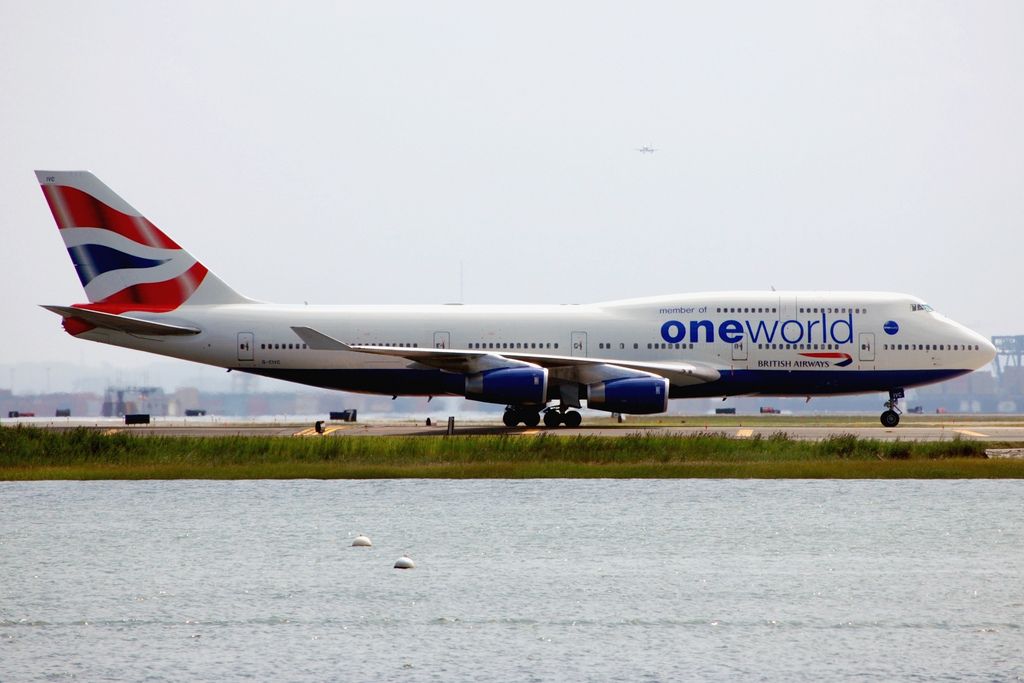Steps Toward a Green Guide to Flying
A new study on airline carbon efficiency is interesting, but not as helpful as it seems.
/https://tf-cmsv2-smithsonianmag-media.s3.amazonaws.com/filer/1d/f4/1df4bd8a-5cdc-4fe2-a5c9-ea1532cd353a/16945663197_25b298062f_o.jpg)
A new report by the International Council on Clean Transportation (ICCT) ranks airlines flying across the Atlantic Ocean in terms of their fuel efficiency—one way of determining which carrier is the most environmentally friendly for one of aviation’s most popular international routes.
The study authors used liters of fuel per passenger-kilometer—the amount of fuel burned per passenger, per kilometer—as their figure of merit. Norwegian Air Shuttle comes out at the top of the list, moving 40 passengers one kilometer (or one passenger 40 km) per liter of burned fuel, followed by Germany’s Airberlin (35 p-km/l, or 14 percent less fuel-efficient than Norwegian) and Ireland’s Aer Lingus (34 p-km/l). The average airlines, typified by behemoth Delta Airlines and much smaller Icelandair, moved 32 p-km/l. The lowest performer is British Airways (BA), which burns 51 percent more fuel per passenger-km than Norwegian, followed by Scandinavian Air Service (SAS) and Lufthansa (both burning 44 percent more).
But before you start gloating about your “green” flight to Oslo, there are a few factors to consider.
The biggest determiner of fuel efficiency is aircraft layout: The most efficient flights are those with the most economy-class seats. Norwegian is a low-cost carrier, dedicated to flying as many people as it can across the ocean cheaply, with little thought to amenities or comfort. The airlines at the bottom of the list have more premium seating than average, because they cater to business and first-class travelers. Of course, the cheaper the ticket, the more people want to buy them, so the net impact of fuel-efficient Norwegian and its peers may be to increase total carbon emissions by opening trans-Atlantic flight to people who otherwise might not be able to afford it.
The ICCT study is limited to studying the airlines’ flagship routes, and for legacy airlines like British Airways and Lufthansa, that generally means flights between commercial and transportation hubs, which are flown disproportionately by business executives and wealthy globetrotters. This clientele has the means and inclination to pay for comfort, which means fewer seats and less fuel efficiency. Should Lufthansa or BA reconfigure their aircraft with more seats, which would earn them a better ranking on the ICCT list, displaced wealthy travelers would simply fly with other airlines, and the overall carbon output would be unchanged.

Technology also makes a difference, and the most fuel-efficient airlines tend to fly the most fuel-efficient airplanes. The newest long-haul aircraft off the line are Boeing’s 787 and 747-800, and Airbus’ A350 and A380. Of those, the twin-engine 787 and A350 are the most fuel-efficient aircraft overall, while the four-engine 747 and A380 are less efficient (and don’t sell very well as a result). Norwegian boasts an all-787 long-haul fleet, and even though some other airlines on the list have 787s in service (Air Canada, American, United and British Airways), they are mixed in with older, less fuel-efficient aircraft. Many of the airlines at the bottom of the list have large fleets of Boeing 747s and/or Airbus A340s.
It’s worth noting some of the factors affecting p-km/l that aren’t included in the study. How an airplane is flown is hugely important: Flying full-throttle across the ocean will burn a great deal more fuel than the equivalent trip at maximum efficiency. Of course, the airline industry tries to fly as efficiently as possible for cost reasons, pulling back the throttle shortly after takeoff, flying with the wind when possible, and cruising at the highest practical altitude to reduce resistance. But many small factors come into play here, from aircraft type (the A340 is notoriously slow to climb to altitude, thereby using more fuel to get there) to conditions at the origin and destination. Some airports are prone to flight-delaying weather, while some require extra maneuvers to reduce noise or stay away from restricted areas. And overcrowded airports can leave airplanes circling in the sky for long periods of time.
All this goes to say that while the ICCT ranking is helpful, using it to decide which airline is greenest is problematic.
Aviation is, and always has been, a fossil fuel-dependent industry. Though fuel economy was always a consideration, it wasn’t until the oil crises of the late 1970s that it became a primary concern for manufacturers and airlines; until the 1990s and the growing recognition of global warming, “environmental improvements” mostly referred to reducing engine noise (with great success). So, while there have been a series of increasingly tight noise restrictions adopted worldwide, work has only just begun on aircraft emissions standards (with the caveat that airlines have since 2012 been included in the EU’s carbon Emissions Trading System). The International Civil Aviation Office wants to freeze overall carbon emissions from aviation at anticipated 2020 levels, which still leaves five years of increasing emissions. And it is unlikely to meet even that goal as less-developed areas—China, Southeast Asia, and India in particular—build up their airline fleets to match Western standards even as Western traffic keeps growing.
A couple of numbers from the ICCT report underscore this sad truth: A single trans-Atlantic round trip ticket accounts for about a ton of carbon dioxide emission, the same as a full year of 35-km (22-mile) daily commuting in a Toyota Prius. And aviation as a whole emits more carbon per year than the entire nation of South Korea. So for most people, the single best thing they can do to reduce personal carbon emissions is simply not to fly.